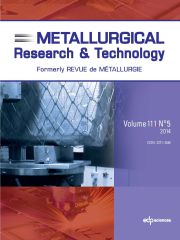Crossref Citations
This article has been cited by the following publications. This list is generated based on data provided by
Crossref.
Santos, Paulo
Gervásio, Helena
and
da Silva, Luís Simões
2016.
A simplified tool to evaluate the sustainability of buildings in steel in early stages of design.
Matériaux & Techniques,
Vol. 104,
Issue. 1,
p.
103.
Soares, N.
Santos, P.
Gervásio, H.
Costa, J.J.
and
Simões da Silva, L.
2017.
Energy efficiency and thermal performance of lightweight steel-framed (LSF) construction: A review.
Renewable and Sustainable Energy Reviews,
Vol. 78,
Issue. ,
p.
194.
Roque, Eduardo
and
Santos, Paulo
2017.
The Effectiveness of Thermal Insulation in Lightweight Steel-Framed Walls with Respect to Its Position.
Buildings,
Vol. 7,
Issue. 1,
p.
13.
Rodrigues, Eugénio
Soares, Nelson
Fernandes, Marco S.
Gaspar, Adélio Rodrigues
Gomes, Álvaro
and
Costa, José J.
2018.
An integrated energy performance-driven generative design methodology to foster modular lightweight steel framed dwellings in hot climates.
Energy for Sustainable Development,
Vol. 44,
Issue. ,
p.
21.
Kornilov, T
Kychkin, I
Nazarov, T
and
Nikiforov, A
2018.
Light-gauge frame construction: numerical analysis and research.
IOP Conference Series: Materials Science and Engineering,
Vol. 456,
Issue. ,
p.
012020.
Kornilov, T
Nikiforov, A
Mordovskoy, S
and
Danilov, N
2018.
On The Experience Of Constructing A Vented Under-Floor Space With Heat-Insulated Fences Under The Buildings Of The Lightweight Steel-Framed Constructions On Permafrost Soils.
IOP Conference Series: Materials Science and Engineering,
Vol. 463,
Issue. ,
p.
032017.
Santos, Paulo
Lemes, Gabriela
and
Mateus, Diogo
2019.
Thermal Transmittance of Internal Partition and External Facade LSF Walls: A Parametric Study.
Energies,
Vol. 12,
Issue. 14,
p.
2671.
Soares, Nelson
Martins, Cláudio
Gonçalves, Margarida
Santos, Paulo
da Silva, Luís Simões
and
Costa, José J.
2019.
Laboratory and in-situ non-destructive methods to evaluate the thermal transmittance and behavior of walls, windows, and construction elements with innovative materials: A review.
Energy and Buildings,
Vol. 182,
Issue. ,
p.
88.
Santos, Paulo
Gonçalves, Margarida
Martins, Cláudio
Soares, Nelson
and
Costa, José J.
2019.
Thermal transmittance of lightweight steel framed walls: Experimental versus numerical and analytical approaches.
Journal of Building Engineering,
Vol. 25,
Issue. ,
p.
100776.
Roque, Eduardo
Santos, Paulo
and
Pereira, Andreia Carvalho
2019.
Thermal and sound insulation of lightweight steel-framed façade walls.
Science and Technology for the Built Environment,
Vol. 25,
Issue. 2,
p.
156.
Lohmann, Victor
and
Santos, Paulo
2020.
Trombe Wall Thermal Behavior and Energy Efficiency of a Light Steel Frame Compartment: Experimental and Numerical Assessments.
Energies,
Vol. 13,
Issue. 11,
p.
2744.
Santos, Paulo
and
Ribeiro, Telmo
2021.
Thermal Performance of Double-Pane Lightweight Steel Framed Walls with and without a Reflective Foil.
Buildings,
Vol. 11,
Issue. 7,
p.
301.
Kornilov, T A
and
Nikiforov, A Ya
2021.
Effectiveness Evaluation of Cellar Application with Controlled Temperature Mode in Low-Rise Buildings with Pile Foundations.
IOP Conference Series: Materials Science and Engineering,
Vol. 1079,
Issue. 6,
p.
062011.
Buzatu, Raluca
Ungureanu, Viorel
Ciutina, Adrian
Gireadă, Mihăiţă
Vitan, Daniel
and
Petran, Ioan
2021.
Experimental Evaluation of Energy-Efficiency in a Holistically Designed Building.
Energies,
Vol. 14,
Issue. 16,
p.
5061.
Reis, Inês F. G.
Figueiredo, António
and
Samagaio, António
2021.
Modeling the Evolution of Construction Solutions in Residential Buildings’ Thermal Comfort.
Applied Sciences,
Vol. 11,
Issue. 5,
p.
2427.
Zhan, Qiaosheng
Pungercar, Vesna
Musso, Florian
Ni, Hong
and
Xiao, Yiqiang
2021.
Hygrothermal investigation of lightweight steel-framed wall assemblies in hot-humid climates: Measurement and simulation validation.
Journal of Building Engineering,
Vol. 42,
Issue. ,
p.
103044.
Lamy-Mendes, Alyne
Pontinha, Ana Dora Rodrigues
Alves, Patrícia
Santos, Paulo
and
Durães, Luisa
2021.
Progress in silica aerogel-containing materials for buildings’ thermal insulation.
Construction and Building Materials,
Vol. 286,
Issue. ,
p.
122815.
Santos, Paulo
and
Ribeiro, Telmo
2021.
Thermal Performance Improvement of Double-Pane Lightweight Steel Framed Walls Using Thermal Break Strips and Reflective Foils.
Energies,
Vol. 14,
Issue. 21,
p.
6927.
Yeganeh, Ali
Younesi Heravi, Moein
Razavian, Seyed Behnam
Behzadian, Kourosh
and
Shariatmadar, Hashem
2022.
Applying a new systematic fuzzy FMEA technique for risk management in light steel frame systems.
Journal of Asian Architecture and Building Engineering,
Vol. 21,
Issue. 6,
p.
2481.
Baharudin, Mohamad Azil Muzammil Bin
and
Isa, Mohd Hafizal Mohd
2022.
Advances in Civil Engineering Materials.
Vol. 223,
Issue. ,
p.
109.


